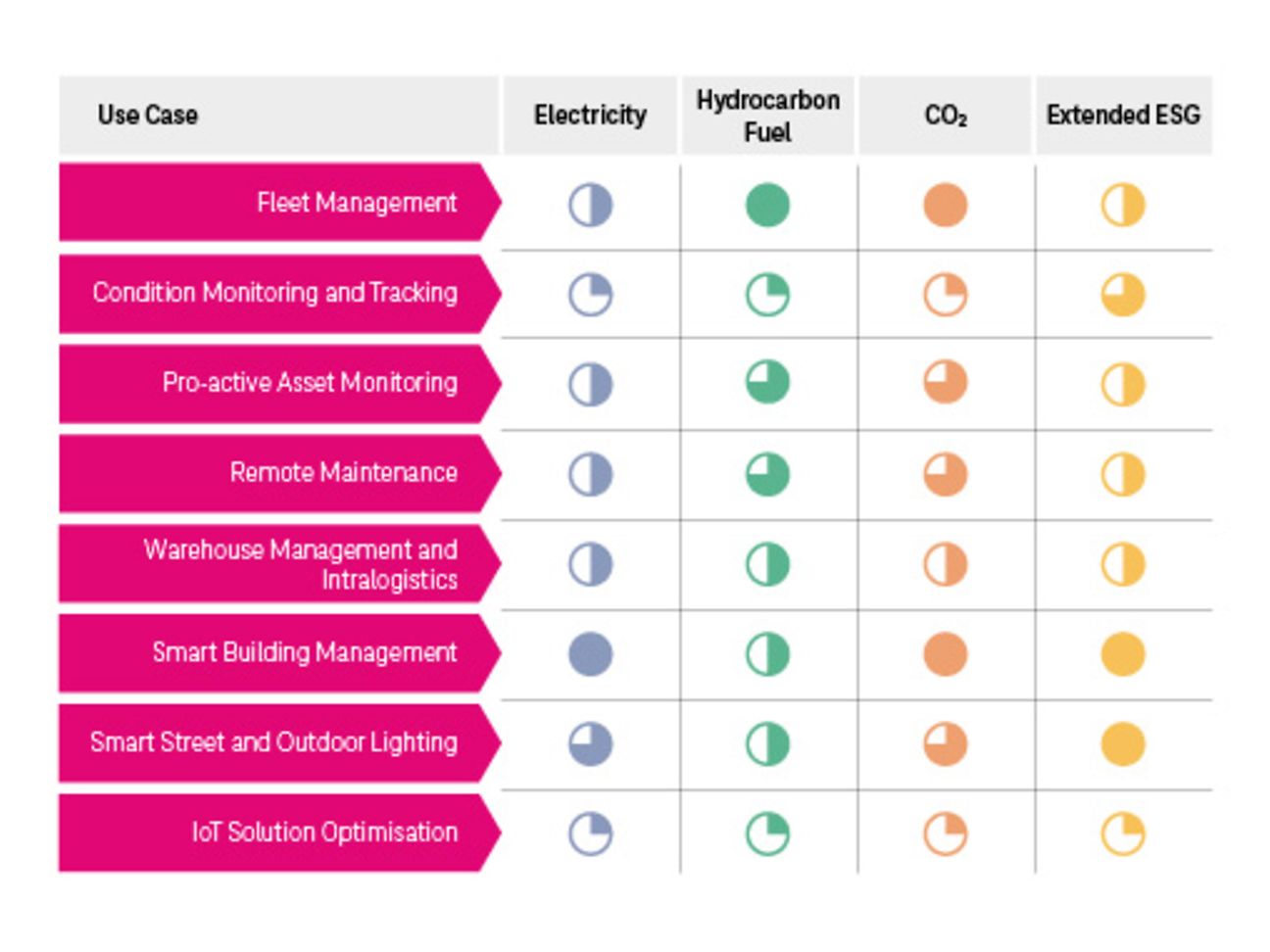

More sustainable, more digital, more efficient with IoT
Business and society are faced with the challenges of overcoming the energy crisis and climate change. The Internet of Things (IoT) allows companies to make an important contribution to sustainability. They reduce CO2 and costs, save precious raw materials, and unlock ESG benefits.
Moving, heating or cooling things consumes energy. Companies are improving their sustainability performance with IoT solutions. This is shown in the new study conducted by Deutsche Telekom in collaboration with Transforma Insights. The study examined the sustainability impact of IoT applications in various industries. If companies implement the IoT solutions shown, they reduce fuel and electricity consumption and reduce CO2 emissions. They also contribute towards ESG goals.
ESG stands for environment, social and corporate governance. Different criteria from these three areas are used to assess a company's sustainability. Five solutions and customer examples from the IoT study show how IoT impacts sustainability and ESG:
Intelligent building management reduces CO2
Windows are open, and at the same time rooms that are not being used at all are being heated or cooled. Smart applications for buildings help companies operate more sustainably. The smart solutions reduce the electricity consumed by 10 to 20 percent. At the same time, they improve employee health and satisfaction. Did you know, condition monitoring does not only help with buildings but also with food or medicine monitoring: If IoT monitors temperature, food loss in transit drops by 30 percent. CO2 emissions also decrease.
Accenture uses a smart building management solution in its Brussels offices. The company is achieving improvements in overall space utilization. In addition, employee comfort is increased thanks to an optimal indoor climate.
Smart street and outdoor lighting saves electricity
Smart street lighting or illuminated signs minimize electricity consumption and CO2 emissions by 20 to 30 percent. This is because the intensity of the light can be adapted to specific times of day, events, presence of people and other environmental factors.
An intelligent lighting system with IoT controls the 140 meters of the Hamburg building “Berliner Bogen”. An operator monitors the lighting system remotely. In case of failures, the repair process is initiated automatically. The technician receives details about the malfunction and brings the right spare parts right away. The IoT solution saves costs for maintenance and operation. It also contributes to a significant reduction in energy costs.
Remote maintenance reduces fuel consumption and CO2
Remote maintenance of connected machines and devices reduces on-site service appointments by an average of 20 to 30 percent. Fewer service trips mean less fuel consumption, CO2 emissions and maintenance costs.
Coca Cola Hellenic Bottling Company (HBC) avoids interruptions to production line operations by providing remote inspections and support. In the event of production downtime, employees use smart glasses and video links to talk to experts. With smart remote support, Coca Cola HBC reduces machine downtime by 50 percent. At the same time, the company saves 20 percent of the time spent on changeover processes in production. Coca Cola also reduces time spent and travel costs for specialists. If used for schooling purposes, employees are trained 30 percent faster.
Intelligent fleet management reduces fuel consumption
In fleet management, IoT enables optimized route planning and improved driving behavior with an average 15 percent reduction in fuel consumption. It also saves tires, brakes and batteries. Less wear and tear means less impact on the environment from microplastics, brake dust and toxic chemicals.
Bardusch, a medium-sized textile service provider, uses IoT tracking devices in its 380 delivery vans and trucks. The company receives real-time data about drivers and vehicles: locations, mileage, fuel levels or driving and rest times. Thanks to the IoT fleet solution, Bardusch selects the most cost-effective routes, increases vehicle utilization rates, reduces empty runs, lowers fuel costs and serves its customers more efficiently. As a result, customer satisfaction increases.
Click here to download the IoT study: Sustainable with IoT

